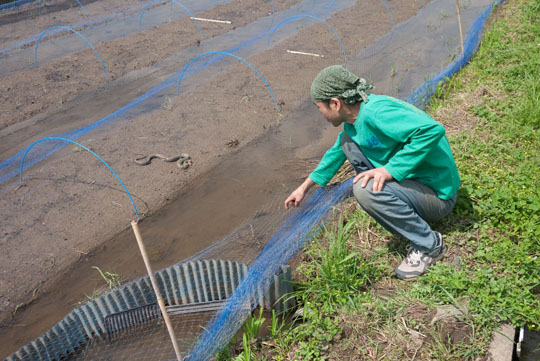Yasunori Toyoguchi peers under the netting protecting a small rice paddy. "See," he says, pointing to some grassy shoots, "here's this year's crop, just starting to emerge." He scoops up a little of the water trickling over the mud with one hand. "See how clear and clean this is?" he asks. "The frogs and tadpoles love it."
Beyond the flooded paddy is one covered with renge (Chinese milk vetch) flowers, used traditionally as green manure on fallow fields in rice-growing regions. In a few days, Toyoguchi will sow some more rice seeds there, simply pushing the renge plants aside to make space, allowing them to decay naturally and enrich the soil. "My rice has deeper roots and more vitality because I treat it a little roughly," he laughs.
Straightening up, he gazes at the densely planted, impeccably weed- and flower-free paddies surrounding his cheerfully chaotic patch. "They're starting late this year," he muses. The Fukushima No. 1 nuclear plant is located 120 km away from this tourist-brochure landscape, and even at this distance, both conventional and organic farmers alike have been watching and waiting, wondering if it's all right to plant and plan again.

















With your current subscription plan you can comment on stories. However, before writing your first comment, please create a display name in the Profile section of your subscriber account page.